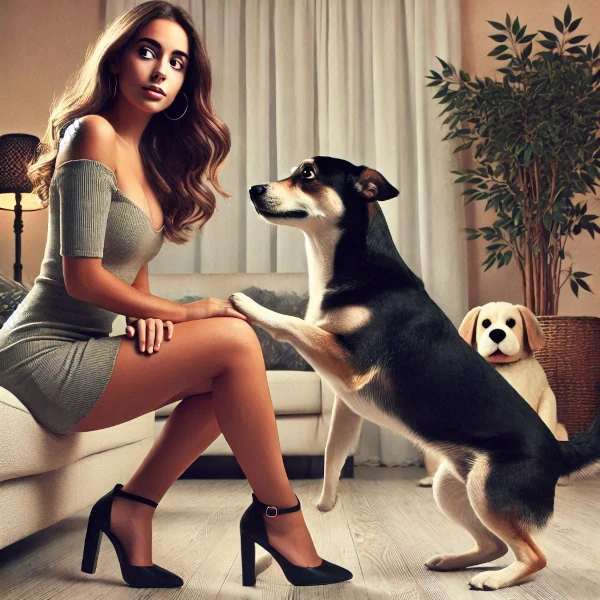
Allow your dog to express joy without jumping on your guests by following these simple dog training tips and techniques. Well-controlled behavior contributes to a friendly and safe atmosphere for everyone.
Before taking action, it is essential to understand why your dog jumps on guests. This could be due to excessive excitement, an emotional response to novelty, or a quest for attention. Dogs are naturally curious and affectionate, but when this affection takes the form of inappropriate behaviors, such as jumping, it can pose a problem during encounters with visitors.
A careful assessment of your dog's emotional state can help identify whether its behavior is related to fear, anxiety, or simple euphoria. Sometimes, a dog may jump on guests because it lacks social experience or because it has not yet fully integrated the social rules of human interaction.
Establishing clear and consistent rules is crucial. It is important to define acceptable and unacceptable behaviors from the start. For example, each time your dog jumps on a guest, calmly ask it to sit or lie down. Repeat this command until the behavior is integrated.
Ensure that all family members, as well as your guests, follow the same instructions to avoid confusion. With consistency, the dog quickly learns what is expected of it.
Teaching your dog alternative behaviors such as sitting or lying down is essential to avoid jumping. Use positive rewards such as treats or petting to encourage these behaviors. The more the dog associates these positive behaviors with a pleasant interaction, the less it will tend to jump.
Start by showing the dog what you expect, then reward it each time it behaves correctly. Training can include the use of interactive toys, play sessions, or regular walks to channel its energy and concentration.
A well-socialized and physically active dog is less likely to jump on guests. Ensure your dog receives an adequate amount of daily exercise to release its energy. Physical exercises also help reduce emotional agitation.
Walks, interactive games, scent activities, or basic exercises like "fetch" are perfect for keeping a dog mentally and physically stimulated. Better socialization with people, dogs, and varied situations also helps the dog feel more confident in new environments.
When your dog jumps, a firm and clear reminder of what is acceptable can be used. This can include using a "no" followed by an alternative command, such as "sit" or "come." Ensure the correction is consistent and respectful, never excessive or punitive.
Use tools such as the "time-out" method where the dog is gently guided to a quiet area to reflect on its behavior. The goal is to redirect attention to a desired behavior without creating fear or anxiety.
When starting training, it may be helpful to temporarily restrict your dog's access to guests. Place it in a different room or use a short leash to guide it while maintaining a controlled distance. This allows for better behavior management until it is under control.
This approach also helps limit negative interactions and gives the dog an opportunity to learn while reducing risks for guests.
Consistency in dog training is crucial. Ensure that each family member or guest follows the same instructions to reduce confusion in the dog. Each mistake or exception can delay the learning process.
It is important to remain patient and consistent in your efforts, as behavioral changes can take time, especially for a younger dog or a dog with a non-socialized past.